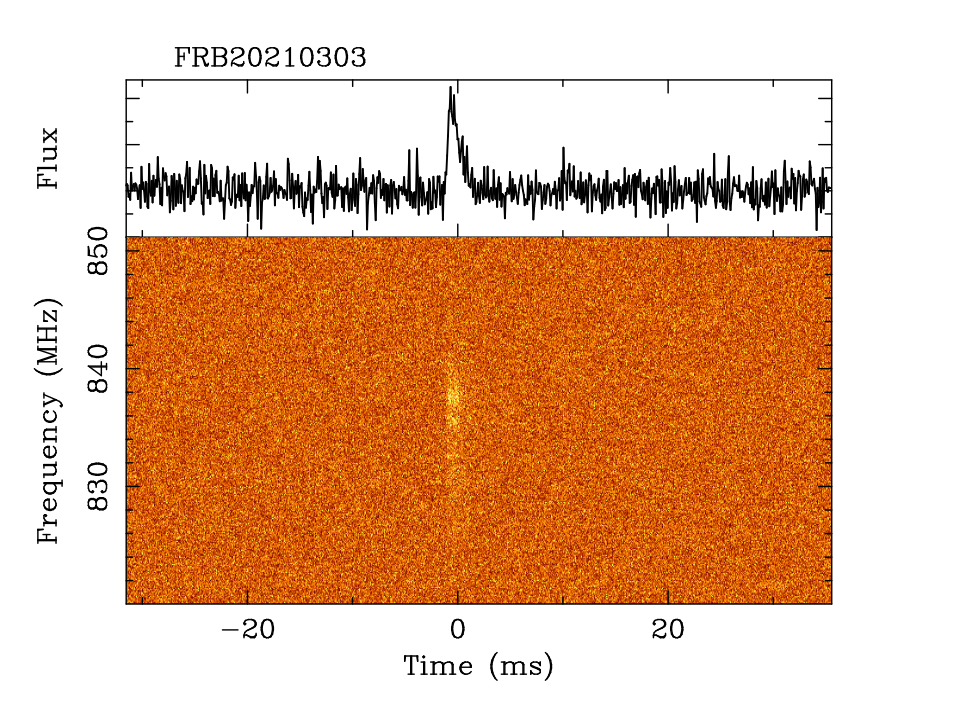At UTC 2021-03-03-01:28:46.9 (2021-03-03.06165), we found a fast radio burst as part of the ongoing search program at the Molonglo telescope (UTMOST).
Molonglo is a 1.6 km long East-West array (Bailes et al 2017, PASA, 34, 45) and was operating in drift-scan mode, pointing at the meridian at the time of detection. Source localisation is excellent in Right Ascension (5 arcsec at 1-sigma) but poor in Declination (~1.2 deg at 1-sigma) (see Caleb et al 2017 MNRAS 468, 3746).
FRB210303A was found during a blind FRB search programme in real-time using an automated GPU-accelerated/machine learning-based pipeline and the raw voltages were recorded for offline processing.
The optimal dispersion measure (DM) that maximizes the signal-to-noise ratio is: 366.9 pc cm^-3. The DM estimate of NE2001 model is ~37.4 pc cm^-3, and YMW16 model is ~25.2 pc cm^-3 at this position, resulting in an intergalactic excess of ~329.6 pc cm^-3. The upper limit on the DM-inferred redshift is thus z ~ 0.33.
An early estimate (lower limit) of the event’s apparent fluence is ~37.8 Jy ms (corrected for attenuation of the primary beam in the RA direction, but not in the Dec direction) with a detection signal-to-noise ratio = 21.8.
The most likely position is RA = 22:15:52.3, DEC=-46:05:32, J2000, Galactic: Gl = 350.7129376 deg, Gb = -53.989646 deg. The 95% confidence localisation arc is as follows: (RA, DEC) in (hours, deg)
22.273572 -50.44886
22.272372 -49.948111
22.271211 -49.447389
22.270081 -48.946639
22.268983 -48.445889
22.267917 -47.945111
22.266881 -47.444361
22.265875 -46.943611
22.264897 -46.442833
22.263947 -45.942056
22.263025 -45.441278
22.262128 -44.940500
22.261253 -44.439722
22.260406 -43.938944
22.259581 -43.438139
22.258778 -42.937361
22.257997 -42.436556
22.257236 -41.935750
A formula describing the localisation arc is:
RA = 22.264419 – 1.911549e-3 * (DEC+ 46.192395) + 5.435355e-05*(DEC +46.192395)**2
where RA is in hours, Dec is in deg, and is valid in the range Dec= [-40, -52]
Follow-up observations of the FRB are encouraged.
